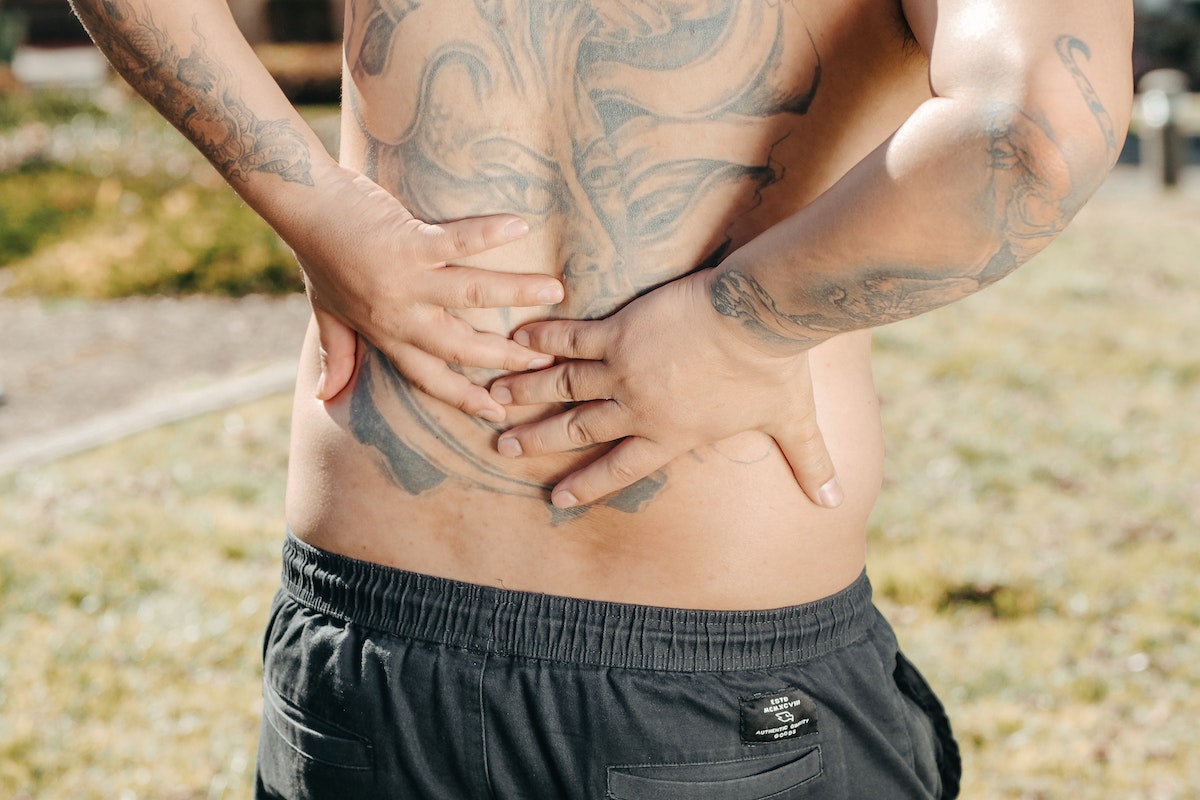Introduction
Lumbar pain, commonly known as lower back pain, is a prevalent health issue affecting millions of people worldwide. The lumbar region of the spine, located in the lower back, is crucial for providing support, stability, and flexibility to the body. However, due to its heavy load-bearing function and constant use, the lumbar area is prone to pain and discomfort. In this comprehensive article, we will delve into the causes, symptoms, diagnosis, treatment options, and preventive measures for lumbar pain.
Section 1: Anatomy of the Lumbar Spine
The lumbar spine is composed of five vertebrae (L1 to L5) situated between the thoracic spine and the sacrum. It is responsible for supporting the upper body’s weight, providing a range of movements, and protecting the spinal cord and nerve roots. The lumbar vertebrae are cushioned by intervertebral discs that act as shock absorbers, allowing smooth movements and preventing bone-on-bone contact.
Section 2: Common Causes of Lumbar Pain
Lumbar pain can be attributed to various factors, including:
- Muscle Strain: Overexertion, lifting heavy objects, or sudden movements can strain the muscles and ligaments of the lower back, leading to acute pain.
- Herniated Disc: When an intervertebral disc ruptures or bulges, it can compress nearby nerves, causing sharp pain that may radiate down the legs.
- Degenerative Disc Disease: Age-related wear and tear of the intervertebral discs can cause loss of disc height, leading to instability and pain.
- Sciatica: Compression or irritation of the sciatic nerve, which runs from the lower back down to the legs, can cause shooting pain along the nerve pathway.
- Spinal Stenosis: Narrowing of the spinal canal, often due to aging or degenerative changes, can put pressure on the spinal cord or nerve roots.
- Spondylolisthesis: A condition in which one vertebra slips forward over another, causing pain and spinal instability.
- Arthritis: Inflammation of the joints in the lumbar spine, such as osteoarthritis or ankylosing spondylitis, can lead to chronic pain.
- Fractures: A broken vertebra, often resulting from trauma or osteoporosis, can cause severe pain and potential nerve damage.
- Muscle Imbalances: Weakness or tightness in certain muscle groups can disrupt the natural alignment of the spine and contribute to lumbar pain.
- Structural Abnormalities: Congenital or acquired spinal abnormalities, such as scoliosis, may cause lumbar pain over time.
Section 3: Symptoms of Lumbar Pain

Lumbar pain can manifest in various ways, depending on the underlying cause. Common symptoms include:
- Low Back Pain: Dull, aching, or sharp pain in the lower back region.
- Pain Radiating Down the Legs: Sciatica or nerve compression can cause shooting pain, tingling, or numbness that travels down the legs.
- Limited Range of Motion: Difficulty bending, twisting, or performing everyday movements due to pain and stiffness.
- Muscle Spasms: Involuntary contractions of the back muscles that can be painful and disruptive.
- Pain with Movement: Aggravation of pain with certain movements, such as bending or lifting.
- Weakness and Instability: Reduced strength and stability in the lower back, affecting posture and balance.
- Pain Worsened by Prolonged Sitting or Standing: Discomfort often increases with extended periods of inactivity or poor posture.
Section 4: Diagnosing Lumbar Pain
Diagnosing the cause of lumbar pain typically involves a combination of the following:
- Medical History: The healthcare provider will inquire about the patient’s symptoms, medical history, and any recent injuries or activities that may have contributed to the pain.
- Physical Examination: A thorough examination of the lower back, assessing range of motion, muscle strength, reflexes, and areas of tenderness.
- Imaging Studies: X-rays, MRI, or CT scans may be conducted to visualize the lumbar spine’s internal structures and detect any abnormalities or injuries.
- Electromyography (EMG): A nerve conduction study to assess nerve function and identify any nerve compression or damage.
- Bone Density Test: For older patients, a bone density test may be performed to check for osteoporosis or bone weakness.
Section 5: Treatment Options for Lumbar Pain
Treatment for lumbar pain depends on the underlying cause and severity of the symptoms. Common treatment options include:
- Rest: Adequate rest is essential to allow the lower back to heal and recover from acute pain.
- Pain Medication: Over-the-counter pain relievers or prescription medications may be used to manage pain and inflammation.
- Physical Therapy: Targeted exercises and stretches to strengthen the core and back muscles, improve flexibility, and promote proper posture.
- Hot and Cold Therapy: Applying heat packs or cold compresses can help reduce inflammation and alleviate pain.
- Epidural Steroid Injections: Injections of corticosteroids into the spinal area to reduce inflammation and alleviate severe pain.
- Spinal Manipulation: Chiropractic adjustments or osteopathic manipulation can provide relief for some cases of lumbar pain.
- Surgical Intervention: In severe cases or when conservative treatments fail, surgery may be necessary to address structural issues or nerve compression.
Section 6: Preventive Measures for Lumbar Pain

Preventing lumbar pain involves adopting healthy habits and practices:
- Maintain Good Posture: Practice proper posture while sitting, standing, and lifting to reduce stress on the lower back.
- Exercise Regularly: Engage in regular physical activity to strengthen the core and back muscles, promoting spinal stability.
- Lift Properly: Use proper lifting techniques, bending at the knees, and keeping the back straight when lifting heavy objects.
- Avoid Prolonged Sitting: Take breaks and incorporate movement throughout the day to prevent strain on the lower back.
- Weight Management: Maintain a healthy weight to reduce the pressure on the lumbar spine.
- Ergonomic Support: Ensure proper ergonomics at workstations to minimize strain on the lower back.
- Stretching and Flexibility: Regularly perform stretching exercises to maintain flexibility and prevent muscle imbalances.
Conclusion
Lumbar pain is a common and sometimes debilitating condition that can significantly impact an individual’s daily activities and quality of life. Understanding the potential causes, symptoms, treatment options, and preventive measures for lumbar pain is essential for promoting lower back health and overall well-being. Regular exercise, proper lifting techniques, and maintaining proper posture are all critical components of lumbar care. If lumbar pain persists or is accompanied by concerning symptoms, seeking timely medical evaluation is essential for identifying the underlying cause and ensuring appropriate treatment. By adopting healthy habits and seeking timely medical attention when needed, individuals can maintain a strong and pain-free lower back.



